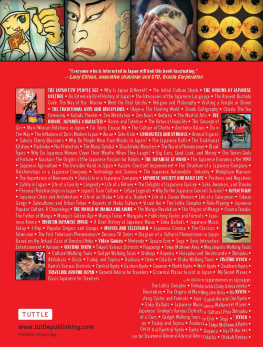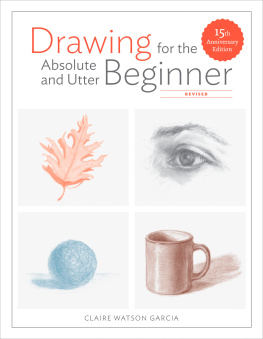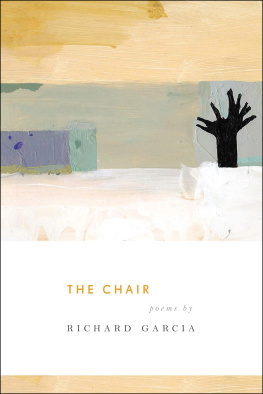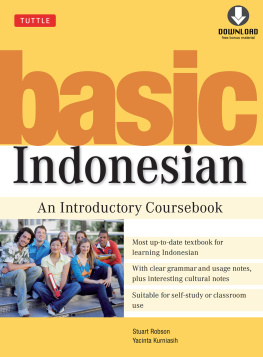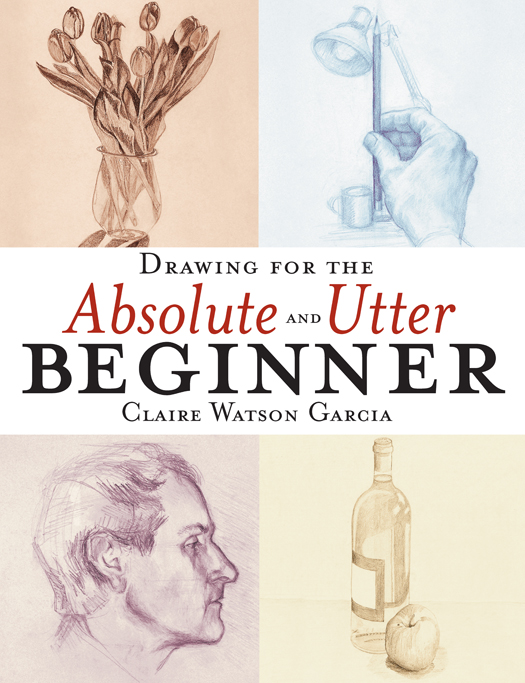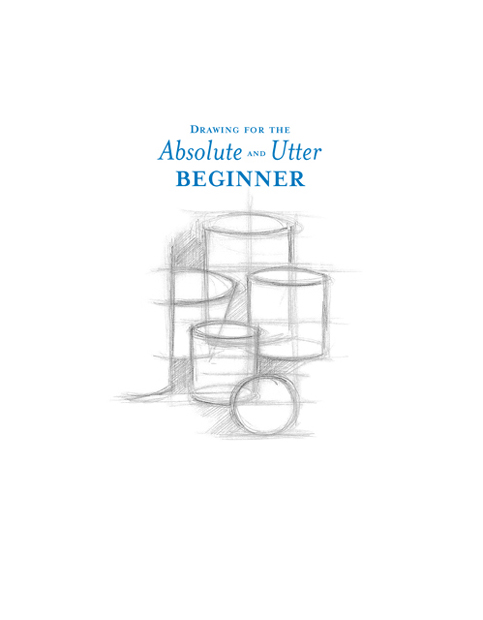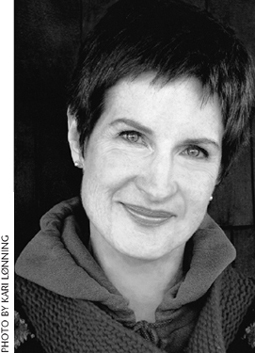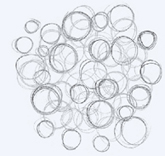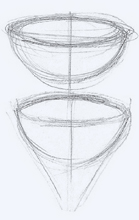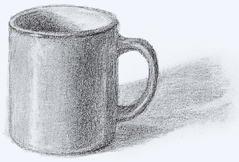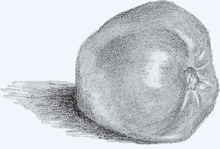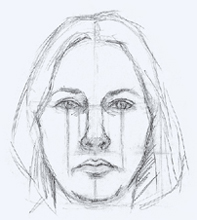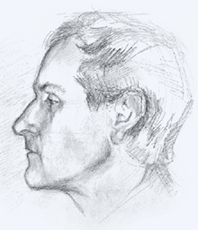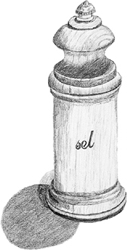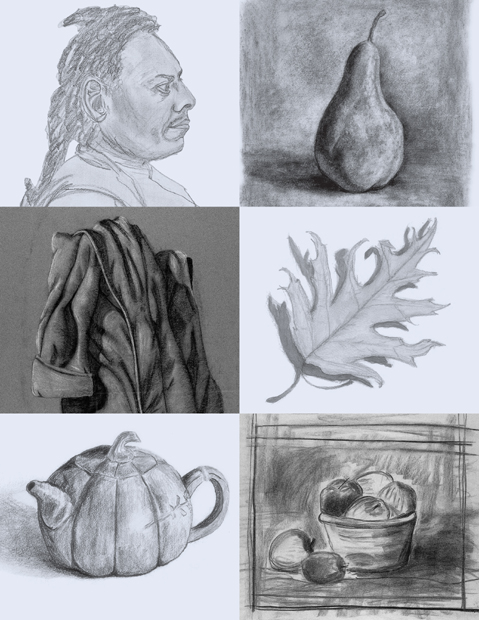
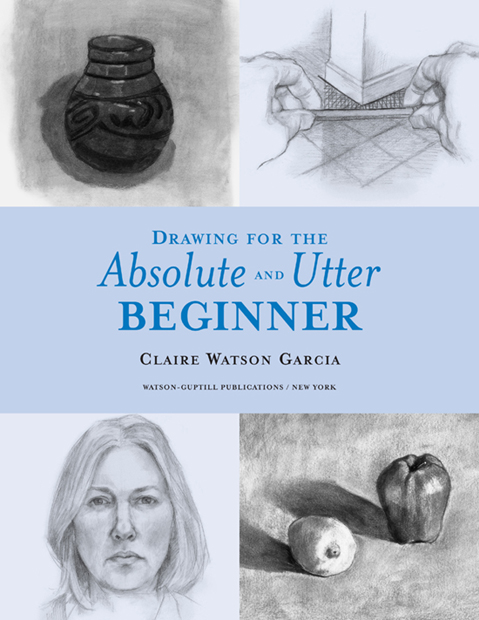
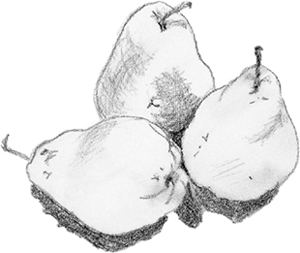
Senior Acquisitions Editor, Joy Aquilino
Edited by Robbie Capp
Designed by Areta Buk
Cover designed by Sivan Earnest
Graphic Production by Hector Campbell
ART CREDITS
Unless otherwise identified, all artwork by the author.
: Drawing by Claire Watson Garcia
: Drawings, top row from left, by student Bob Pingarron, Claire Watson Garcia; center row from left, student Nancy Opgaard, student Linda Fitzgerald; bottom row from left, student Anne Ballantyne, student Kim Nightingale
: Drawings, top row from left, student Jane Wolansky, Claire Watson Garcia; bottom row from left, Claire Watson Garcia, student Anne Ballantyne
: Drawing by student Sherry Artemenko
: Drawings by student Ann Porfilio, Anita St. Marie, student Barbara Kops, student Michelle G. Cappellieri
Copyright 2003 by Claire Watson Garcia
First published in 2003 in the United States
by Watson-Guptill Publications,
a division of VNU Business Media, Inc.
770 Broadway, New York, NY 10003
www.watsonguptill.com
LIBRARY OF CONGRESS CONTROL NUMBER 2003105861
eBook ISBN: 978-0-8230-8562-0
Trade Paperback ISBN: 978-0-8230-1395-1
All rights reserved. No part of this publication may be reproduced or used in any form or by any meansgraphic, electronic, or mechanical, including photocopying, recording, taping, or information storage and retrieval systemswithout written permission of the publisher.
v3.1
This book is dedicated to the memory of my father,
Winsor Hays Watson Jr.,
with deep love, admiration, and gratitude.
ACKNOWLEDGMENTS
T he support and love of my family, especially my husband, Baxter, daughter, Liz, mother, Jan, brother, Win, and my late father, have been invaluable. At Watson-Guptill, I am grateful to Joy Aquilino, senior acquisitions editor, for her vision; to editor Robbie Capp, book designer Areta Buk, and cover designer Sivan Earnest, for availing me of their many talents; and to Hector Campbell, the projects production manager. My thanks go to the staff of Silvermine School of Art, in New Canaan, Connecticut, especially to Anne Connell and Lynne Arovas. Debbie Beaudry, Janie Bronson, Kari Lnning, Annie Wood, and Al Robertsfriends with generous hearts and great eyesgave me wonderful assistance. My gratitude goes to Putnam Imaging Lab in Danbury, Connecticut, in particular, to Josh Burkholder and Ed Simonovich. And a special, heartfelt thanks to the students at Silvermine who contributed directly to the creation of this book, as well as to the many others who allowed me to teach them and learn from them over the years.
ABOUT THE AUTHOR
C LAIRE W ATSON G ARCIA is an artist and instructor at the renowned Silvermine School of Art in New Canaan, Connecticut, where her Absolute and Utter Beginner courses and workshops have been popular for more than twenty years. She was educated at Smith College, University of California-Berkeley, and California College of Arts and Crafts. She lives in Ridgefield, Connecticut.
Contents
INTRODUCTION
Starting Out
CHAPTER 1
Seeing to Draw
CHAPTER 2
Turning Edges into Objects
CHAPTER 3
Adding Accuracy
CHAPTER 4
Pencil Values
CHAPTER 5
Expanding Value Technique: Wash, Pen, Pencil
CHAPTER 6
Expanding Value Technique: Charcoal
CHAPTER 7
Drawing the Face, Frontal View
CHAPTER 8
Drawing the Face, Profile View
CHAPTER 9
Expanding Value Technique: Cont
CHAPTER 10
Still Life
FINISHING UP
Your Inner Aesthetic
INTRODUCTION
Starting Out
Every child is an artist. The problem is how to remain an artist once he grows up.
PABLO PICASSO
D o you want to learn to draw? You may have a feeling that youre meant to draw, that it could be fun, and might even become a significant part of your life. Your desire may even be a passionate one, as though youre being led to it by an invisible force. After all, our ancestors drew with rudimentary tools on the walls of caves, so theres historical precedent for our impulse to draw.
Maybe youve had a secret (or not so secret) wish for art in your life, and now you feel ready to act on it. You may be a parent who, stimulated by your childs love of art, wants some of that creative joy for yourself. Or perhaps youre a teacher who wants to help budding artists in the classroom, or a retiree looking for a rewarding way to spend free time. You may want to learn drawing fundamentals as a way to open the door to other art forms, like painting.
While there are many different paths to the art of drawing, everyone wants to learn this visual language in order to express what cant fully be expressed in words.
Drawing is a learnable skill, accessible to anyone who decides to activate his or her potential. Youve already made a significant step in that direction simply by picking up a book on learning to draw. Being receptive to the possibility of drawing is the first important step toward acquiring the skill.


